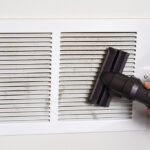Living in a condominium comes with unique challenges and opportunities, especially when it comes to maintenance. One critical aspect often overlooked is the cleaning of air ducts and dryer vents, which is essential not only for air quality but also for safety. Organizing these cleanings as a group among condo residents can lead to significant savings and enhanced safety.
Why Schedule Group Cleanings?
- Cost Efficiency: By scheduling group cleanings, residents can negotiate bulk discounts with service providers. This shared approach can reduce the overall cost per unit, making it economically favorable for everyone involved.
- Enhanced Safety: Dryer vents clogged with lint are a leading cause of fires in residential buildings. Regular cleaning as a group ensures that all units meet safety standards, reducing the risk of fire and improving overall safety in the condo.
- Consistency in Service Quality: When one provider cleans multiple units, the quality and consistency of work are maintained. This prevents scenarios where different contractors might have varying standards of service.
- Convenience: Coordinating a single day for cleaning reduces the disruption typically associated with individual appointments. This is especially beneficial in a condo setting, where access and timing can be streamlined.
- Preventative Maintenance: Regular cleanings prevent the buildup of harmful pollutants and allergens in the air ducts, contributing to a healthier living environment.
Connecting with Certified Professionals
To ensure the best results, it’s crucial to hire certified professionals for the job. Organizations like NADCA (the National Air Duct Cleaners Association) and IAQCert provide lists of certified technicians who meet industry standards for quality and safety. Engaging a certified professional not only ensures high-quality work but also maintains the integrity of your home’s HVAC system.
External Links:
- NADCA: For a list of certified duct cleaning professionals.
- Consumer Product Safety Commission: Tips on dryer vent safety.
Internal Links:














